This mask from the islands of the Torres Straight has human and animal attributes which represented spiritual forces. They would be worn by dancers in rituals to honor ancestral heroes.
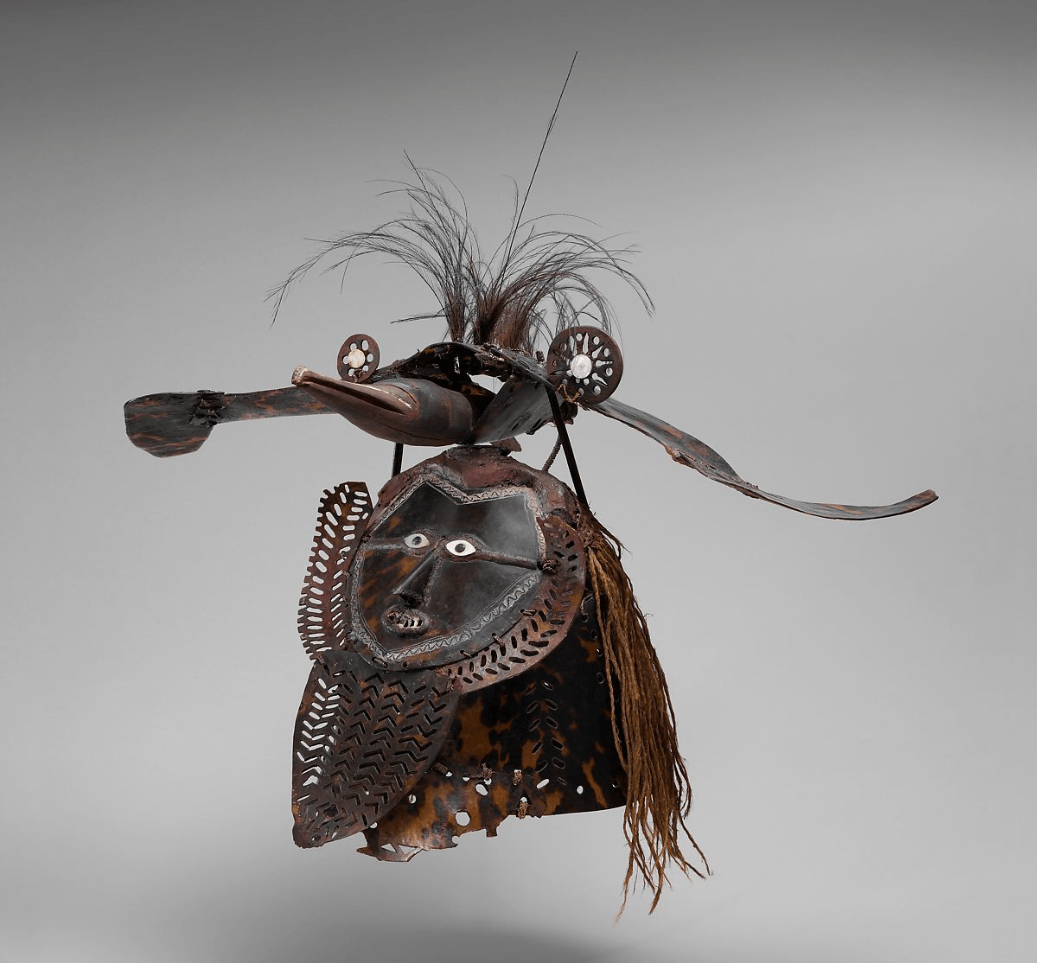 What is the ... Buk (mask). Torres Strait. Mid- to late 19th century C.E. Turtle shell, wood, fiber, feathers, and shell.
What is the ... Buk (mask). Torres Strait. Mid- to late 19th century C.E. Turtle shell, wood, fiber, feathers, and shell.
This polished wooden statue from the Democratic Republic of the Congo would have been commissioned by the king of the Kuba people and acted as his spiritual double. It would have depicted symbols and attributes that represented the King's admiral qualities.
What is the Ndop (portrait figure) of King Mishe Kuba peoples (Democratic Republic of the Congo). c. 1760–1780 C.E. Wood
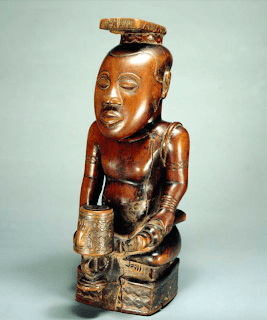

This elaborate mask made of wood, woven raffia, cloth and beads would have been worn by the highest members of the men's society of the Bamileke people of the western grasslands of Cameroon during important community ceremonies and events. The mask-wearer would also have a leopard skin strapped to their back as they danced and processed.
What is the Aka elephant mask. Bamileke (Cameroon, western grasslands region). c. 19th to 20th century C.E. Wood, woven raffia, cloth, and beads.
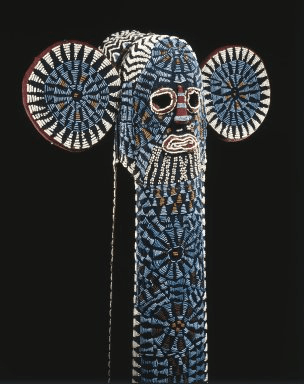
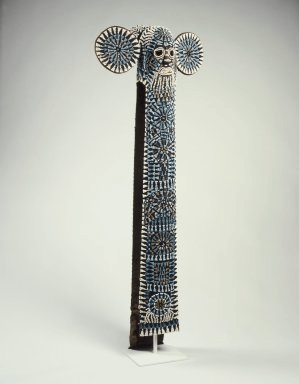
This applied art object would have been used by the people of the Marshall Islands in the Pacific to navigate the challenging waters that surrounded them. The wood, fibers and shells would be arranged in a specific way to map the ocean currents, wave patterns and island locations.
What is a Navigation chart. Marshall Islands, Micronesia. 19th to early 20th century C.E. Wood and fiber.

This ancient royal complex from the Saudeleur Dynasty in Pohnpei, Micronesia was constructed from volcanic basalt logs that occurred naturally from lava that had cooled and then split. It would have served as a residence for the elite and where mortuary activities took place.
What is Nan Madol. Pohnpei, Micronesia. Saudeleur Dynasty. c. 700–1600 C.E. Basalt boulders and prismatic columns.

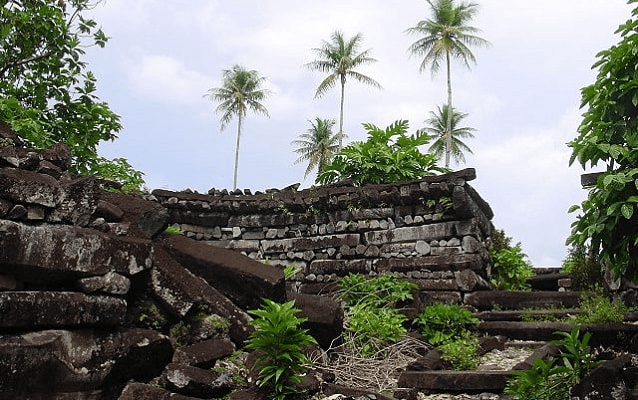
This wooden mask of the Baule people of the Ivory Coast in Africa would have appeared in the final sequence of elaborate public festivals honoring the communities most distinguished members. The mask represents the individuals artistic double.
What is the
Portrait mask (Mblo). Baule peoples (Côte d’Ivoire). Late 19th to early 20th century C.E. Wood and pigment;
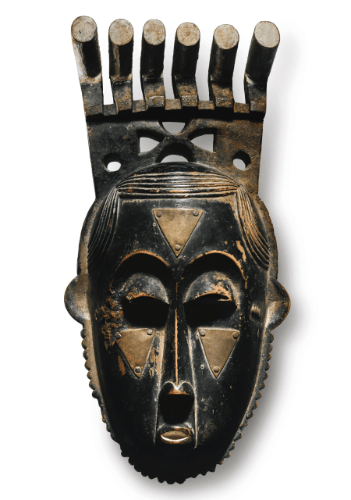
This red and yellow garment would have been worn by Hawaiian kings into battle or during important ceremonies during the late 18th century as a symbol of their high rank.
What is the ‘Ahu ‘ula (feather cape). Hawaiian. Late 18th century C.E. Feathers and fiber.

This polished wooden female diety sculpture which represented the goddess Kawe would have been placed in this structure by the Nukuoro men of Micronesia and this time of the year for this purpose.
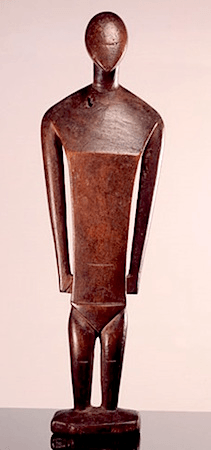
What is a men's cult house during the harvest for offerings to be brought to this statue that was believed to embody the spirit of the goddess who would help them in the success of the harvest.
This applied art object would have been used by the Luba people of the Democratic Republic of the Congo to recall their history. It would have been "read" by a trained Memory Man who could interpret the story told through the patterns and iconography created with wood, beads and metal.
What is a Lukasa (memory board). Mbudye Society, Luba peoples (Democratic Republic of the Congo). c. 19th to 20th century C.E. Wood, beads, and metal.

These ancient ruins found in Southeastern Zimbabwe made of coursed granite stone blocks would have once been structures that were a part of a large civilization consisting of around 18,00 people. The curved structures themselves were constructed with no morter and contain no right angles.
What is the Conical tower and circular wall of Great Zimbabwe. Southeastern Zimbabwe. Shona peoples. c. 1000–1400 C.E. Coursed granite blocks.
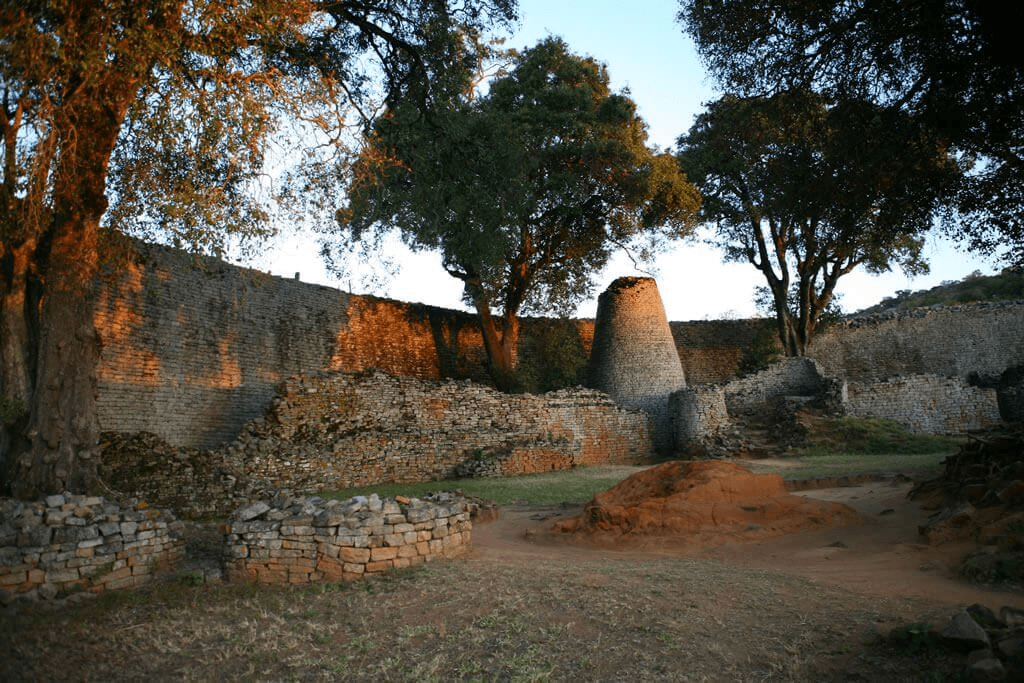
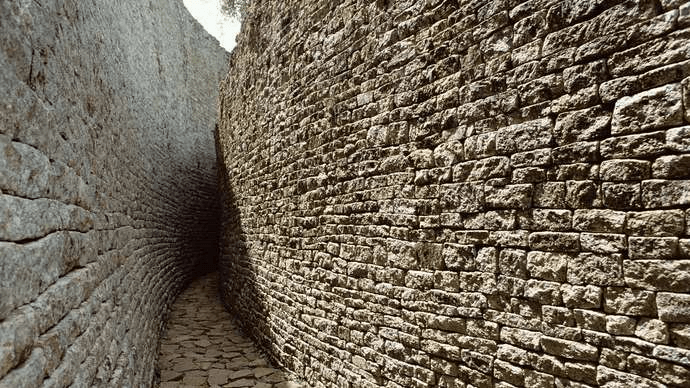
This Sande Society mask made from wood cloth and fibers from Mende people in West Africa would have sat on top of the head and been danced at the initiation of young girls into womanhood. The abstracted features on the mask of high forehead, downcast eyes and closed mouth depict ideal female beauty standards.
What is the Bundu mask. Sande Society, Mende peoples (West African forests of Sierra Leone and Liberia). 19th to 20th century C.E. Wood, cloth, and fiber.
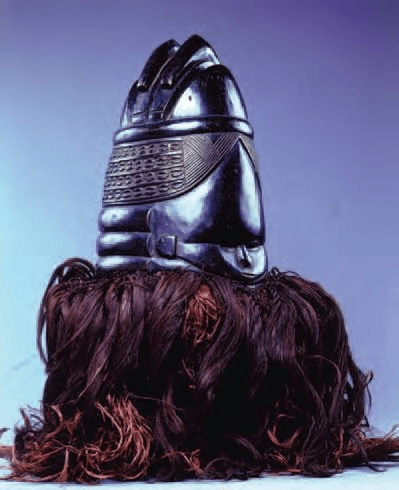
This cast bronze work from the Edo peoples in Benin, Nigeria would have been found in the royal palace and would have been used to tell the history of the Kings of this region.
What is the Wall plaque from Oba’s Palace
Edo peoples, Benin (Nigeria). 16th century C.E. Cast brass
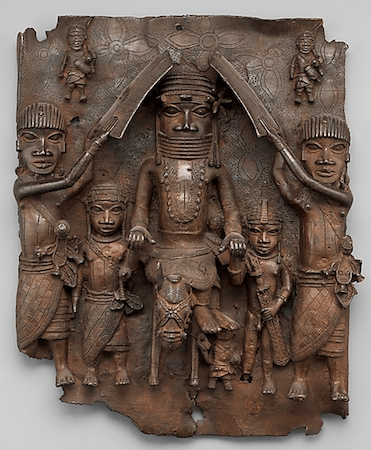
This power figure wooden statue from the Kongo people in the Democratic Republic of the Congo served this purpose for those people and was activated and used by this particular person within that community.
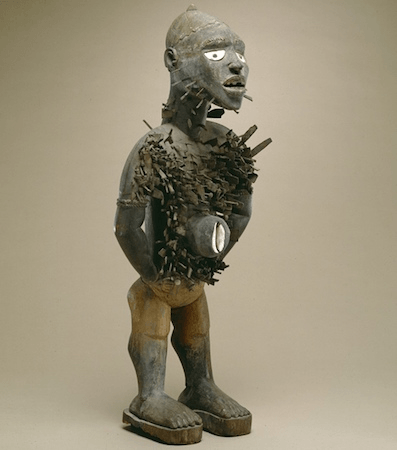
What is to bring healing and settle disputes within the community once activated by the Nganga (shaman) of the community. Nails would be driven in to the statue as a symbol of resolution of a problem or healing that has taken place.
This hand-painted applied art object made from the bark of a Mulberry tree would have been used by the Niue of Polynesia to exchange at important ceremonies and events and would provide spiritual protection and sanctity to objects it was wrapped around.
What is Hiapo (tapa). Niue. c. 1850–1900 C.E. Tapa or bark cloth, freehand painting
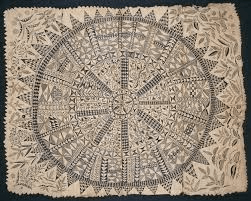
These ancient mysterious volcanic basalt sculptures from the island of Rapa Nui are believed to have possibly marked burial sites, or been guardian figures for the island or perhaps embody spirits of the ancestors.
What are the . Moai on platform (ahu). Rapa Nui (Easter Island). c. 1100–1600 C.E. Volcanic tuff figures on basalt base.

This Chokwe mask from the Democratic Republic of the Congo in Africa would have been worn by a male dancer wearing a skirt and false breasts. His dance performance with this mask would have honored ancestors.
What is the Female (Pwo) mask. Chokwe peoples (Democratic Republic of the Congo). Late 19th to early 20th century C.E. Wood, fiber, pigment, and metal.

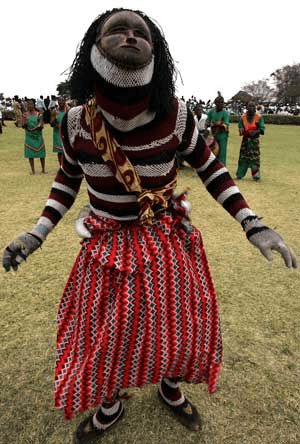
This large wooden statue carved for the palace at Ikere by the master carver, Olowe of Ise, depicts the King seated with his senior wife standing large behind him and is meant to highlight his and her high status and authority.
What is the Veranda post of enthroned king and senior wife (Opo Opoga) Olowe of Ise (Yoruba peoples). 1910-1914 C.E. Wood and pigment

This carved wooden Ikenga shrine figure from the Igbo people in Nigeria were believed to house the spirit of ancestors and the person's personal chi or spirit for whom it was carved. It was believed to act as this for the person for whom it was carved and assisted the person in achieving this during their lifetime.
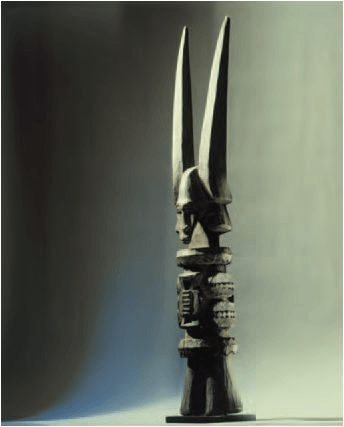
What is a guardian figure who assissted the person in achieving success during their lifetime. It would usually be destroyed at the death of the individual for whom it was made.
This carved wooden mask from the New Ireland Province of Papua New Guinea would have been worn by dancers at a community festival to mourn and honor the dead. This festival could take as long as a year to plan and carry out.
What is the Malagan display and mask. New Ireland Province, Papua New Guinea. c. 20th century C.E. Wood, pigment, fiber, and shell
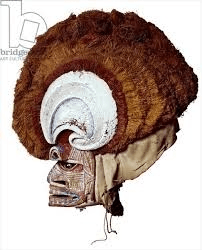
This art object of the Ashanti peoples in Ghana is believed to house the soul of the entire Ashanti civilization. It would only be touched. by the king himself. It was coveted by the British who attempted to steal it during wars of the mid to late 19th century.
What is the Sika dwa kofi (Golden Stool) – Ashanti peoples (south central Ghana) c. 1700 C.E. Gold over wood and cast-gold attachments.
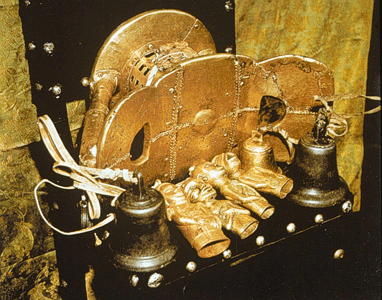
This wooden Byeri Reliquary Figure from the Fang people of Cameroon would have served this purpose for that nomadic group of people.
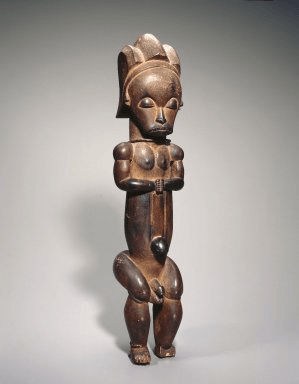
What is a guardian figure seated on top of vessels that held the remains of ancestors. Oil wood be rubbed on the statues during ancestral worship rituals as a way to consult the bones before important decisions/events.